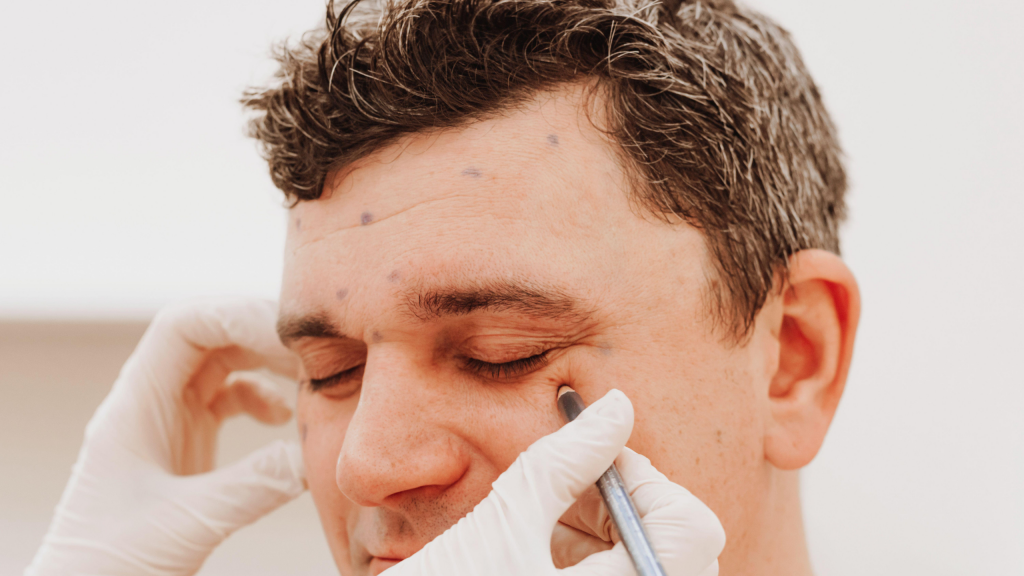n the ever-evolving world of aesthetic medicine, a deep understanding of the science behind new treatments is essential. At Mesglo Aesthetic Clinic in Marylebone, we believe in empowering our clients with knowledge. This article delves into the fascinating science of polynucleotides, exploring how these remarkable DNA fragments work to regenerate skin and hair at a cellular level.
The Molecular Basis of Polynucleotide Therapy
Polynucleotides are chains of nucleotides, the fundamental building blocks of DNA and RNA. In aesthetic medicine, we use highly purified polynucleotides derived from salmon DNA, which have a remarkable similarity to human DNA. This biocompatibility makes them a safe and effective tool for stimulating cellular regeneration.
| Component | Function in Polynucleotide Therapy |
| Nucleotides | Provide the essential building blocks for DNA repair and synthesis. |
| Phosphate Groups | Enhance cellular metabolism and energy transfer. |
| Deoxyribose Sugars | Form the structural backbone of the DNA fragments. |
| Nitrogenous Bases | Facilitate the precise pairing required for DNA replication and repair. |
When introduced into the skin or scalp, these polynucleotides act as a signal for cellular regeneration, triggering a cascade of biological processes that lead to healthier, more youthful tissues. To explore our polynucleotide treatments, visit our Polynucleotide Face Treatment and Polynucleotide Hair Treatment pages.
Mechanisms of Action: A Deeper Dive
The regenerative power of polynucleotides stems from their ability to interact with our cells in two key ways: through the A2 receptor stimulation pathway and the salvage pathway. These intricate mechanisms work in synergy to promote tissue repair, reduce inflammation, and stimulate the production of essential proteins.
The A2 Receptor Stimulation Pathway: Igniting Angiogenesis
The A2A receptor, part of the adenosine receptor family, plays a crucial role in regulating inflammation and blood flow. Polynucleotides act as agonists for this receptor, meaning they bind to it and trigger a cellular response. This activation sets off a chain reaction that ultimately leads to the production of Vascular Endothelial Growth Factor (VEGF).
“The A2 receptor stimulation pathway…activates various transcription factors such as NFκB, CREB, and HIF-1. These transcription factors are crucial for cellular responses to hypoxia, inflammation, and other stimuli. The pathway’s final effects are on vascular endothelial growth factor (Vegf) and angiopoietin, which are critical for angiogenesis—the formation of new blood vessels.” [1]
This increased angiogenesis is vital for skin and hair health. New blood vessels deliver a fresh supply of oxygen and nutrients to the cells, promoting their growth and vitality. This is particularly important for hair follicles, where a rich blood supply is essential for healthy hair growth. For more information on our hair treatments, please see our Hair Treatment page.
The Salvage Pathway: Recycling for Regeneration
Our cells are constantly recycling and reusing materials to maintain their function. The salvage pathway is a critical part of this process, allowing cells to recycle nucleotides from broken-down DNA. As we age, our natural ability to produce new nucleotides declines. Polynucleotides provide a direct source of these essential building blocks, enhancing the salvage pathway and promoting DNA repair and synthesis.
This process is fundamental to the anti-ageing effects of polynucleotide therapy. By providing the necessary components for DNA repair, polynucleotides help to reverse cellular damage and promote the growth of new, healthy cells. This leads to a visible improvement in skin quality, with a reduction in fine lines, wrinkles, and other signs of ageing. Explore our Skin Treatment page for more on our skin rejuvenation services.
Scientific Evidence and Clinical Studies
The efficacy of polynucleotide therapy is not just theoretical; it is supported by a growing body of scientific evidence. Clinical studies have demonstrated the significant improvements that polynucleotides can make to skin and hair health. A recent review published in the International Journal of Molecular Sciences analyzed numerous studies on the use of polynucleotides in aesthetic medicine, concluding that they have a strong potential for improving skin conditions.
“The review found that polynucleotides have been used to improve skin texture, reduce wrinkle depth, and enhance facial appearance. The studies reported varying degrees of efficacy and safety, with some studies demonstrating significant improvements in skin elasticity and hydration.” [1]
These studies provide a solid foundation for the use of polynucleotides in clinical practice. At Mesglo Aesthetic Clinic, we are committed to evidence-based medicine, and we are proud to offer a treatment that is backed by scientific research. We also offer other evidence-based treatments like Mesotherapy for skin rejuvenation.
Conclusion: The Science of Natural Beauty
Understanding the science behind polynucleotide therapy reveals why it is such a powerful tool for skin and hair regeneration. By working with the body’s natural processes, this innovative treatment offers a way to achieve truly natural-looking results. The A2 receptor stimulation and salvage pathways provide a dual-action approach to cellular regeneration, addressing the root causes of ageing and hair loss.
At Mesglo Aesthetic Clinic, we are passionate about the science of beauty. We believe that the best results are achieved when we work in harmony with the body’s own regenerative capabilities. Polynucleotide therapy is a perfect example of this philosophy in action.
Book Your Scientific Consultation
If you are interested in learning more about the science of polynucleotide therapy and how it can benefit you, we invite you to book a consultation at our Marylebone clinic. Our expert practitioners will be happy to answer your questions and develop a personalized treatment plan based on your unique needs. Visit our booking page or call us on 07830402077 to schedule your appointment.
References
1.Lee, K. W. A., Chan, K. W. L., Lee, A., Lee, C. H., Wan, J., Wong, S., & Yi, K. H. (2024). Polynucleotides in Aesthetic Medicine: A Review of Current Practices and Perceived Effectiveness. International Journal of Molecular Sciences, 25(15), 8224. https://doi.org/10.3390/ijms25158224

